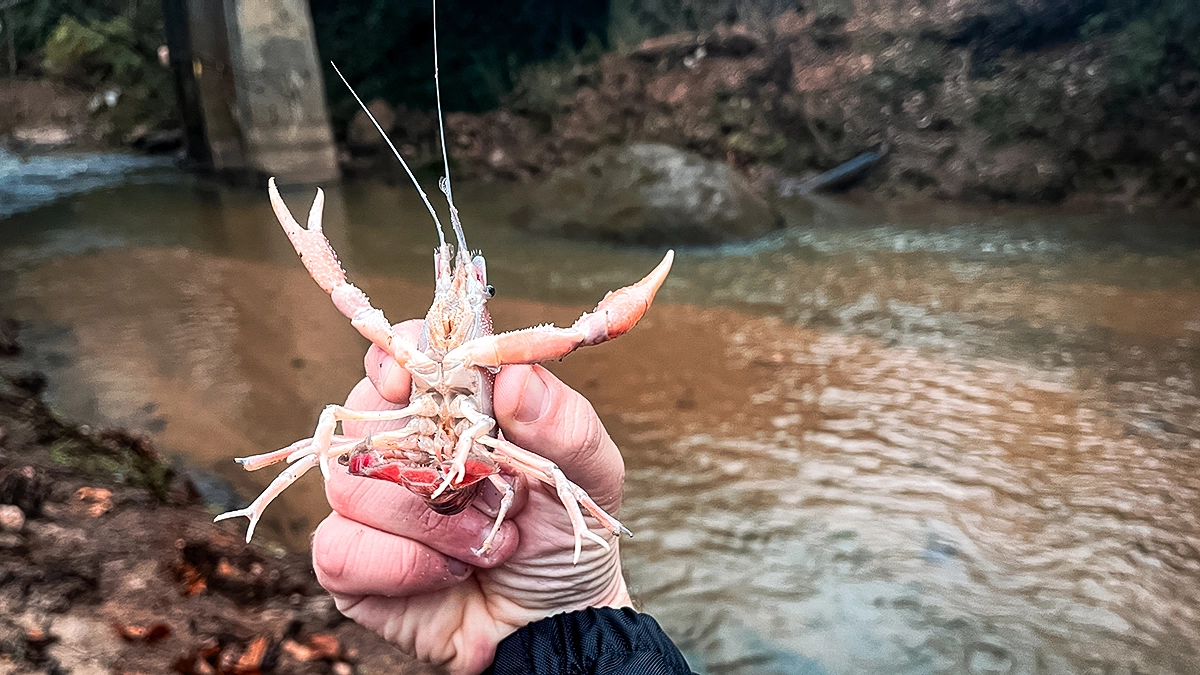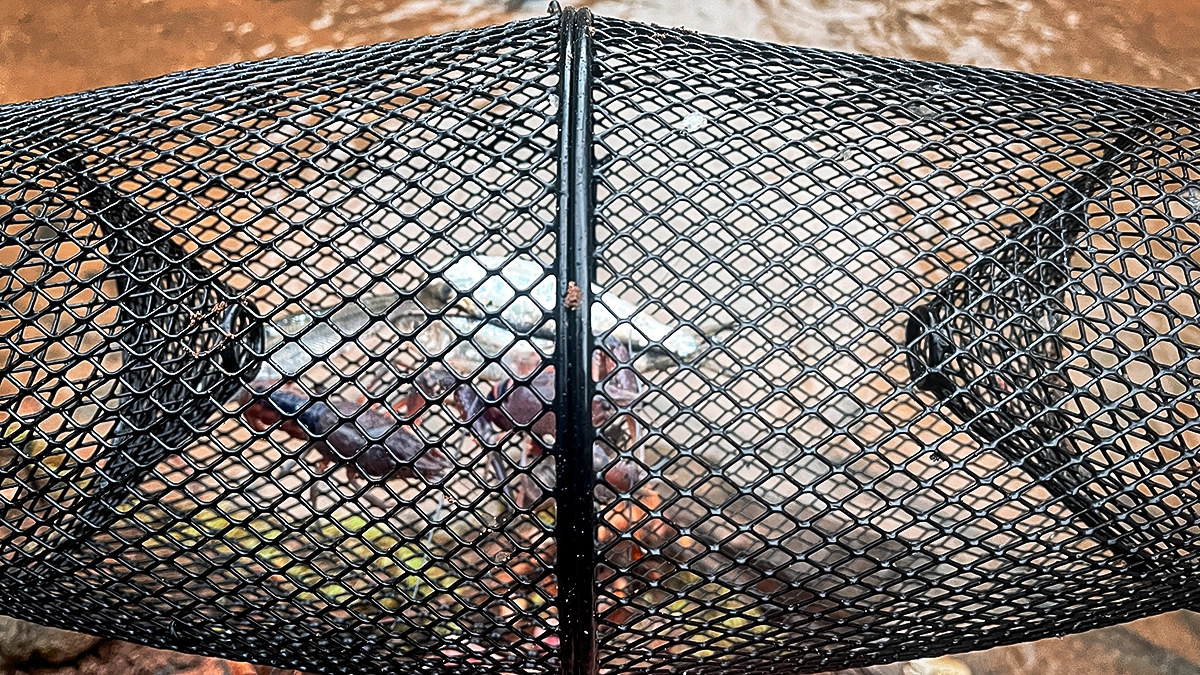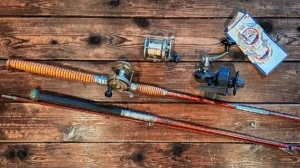When anglers think of live bait, their minds often jump to options like nightcrawlers, baitfish, or even maggots and mealworms for those targeting panfish. The truth is that they are almost always missing one of the best live bait options available: the crayfish. Often the reason is because they don’t know how to catch crayfish.
I love everything about crayfish — eating them myself, catching them, and using them as bait. Their effectiveness is easy to understand: crayfish are abundant in nearly every lake, pond, stream, river, and swamp across North America. Packed with nutrients, they’re a vital forage source for fish and play a key role in top fisheries.
Most anglers who’ve used crayfish as bait have likely targeted smallmouth bass, and for good reason. Crayfish are a favorite meal for bronzebacks everywhere. But smallies are just the beginning. Catfish, walleye, perch, pike, and even trout will devour crayfish with no hesitation. If you doubt their effectiveness, take a look at leading bait designs as jigs, tubes, Ned rigs, chunk style trailers, and creature baits are all to some degree an attempt to imitate crayfish.
Anglers often overlook crayfish as a live bait option because they can be tricky to catch and handle. Whether you call them crayfish, crawfish, crabs, crawdads, yabbies, or mudbugs, here’s everything you need to know about catching and fishing them.
What is a Crayfish?

As mentioned above, depending on where you are in the country, you will hear crayfish referred to by different names. Crayfish is common up North while crawfish dominates in the Southeast. The truth is all the names refer to the same three common crayfish species, Virile Crayfish, Northern Clearwater Crayfish, and Rusty Crayfish.
Based on appearance, it should come as no surprise that crayfish are in fact related to lobsters. Furthermore, crayfish breathe through gills and are truly opportunistic feeders with their diet running the gamut from nutrient-rich bottom muck to decomposing fish.
The trademark physical feature of the crayfish is of course the powerful pinching claws that are positioned on the front-most of their five pairs of legs. These appendages are used to crush and cut food along with protecting them from predators, in the case of a claw being lost, a crayfish can regenerate one within a year.

Ever wonder why bait patterns with colors like blue, black, red, orange, and green seem to work almost everywhere? This could be tied to the crayfish molting process, which occurs with every moon cycle. As crayfish grow, they outgrow their exoskeletons and develop a soft shell beneath the old one before shedding the outer layer. During this vulnerable stage, their colors tend to change, and their soft, unprotected bodies make them easy targets for predators. For lure anglers, it is wise to be on the lookout for the most common color post molt, as everything that swims will be keyed in on that specific tone, regardless of lure choice.
While you might not realize it, crayfish are one of the most important parts of any food chain. In addition to keeping water bottoms clean of decomposing organic matter, they are also a food source for any number of aquatic and non-aquatic critters. Also, crayfish act as a “canary in the coalmine” when it comes to water quality, if they can’t be found, there is often a huge problem.
How to Catch Crayfish

Catching crayfish can be as simple or as involved as you want it to be. At its most basic, they’re easy to catch by hand with a net, especially in small streams where cover is mostly limited to rocks. Start by gently flipping over rocks to keep the water clear. Once you spot a crayfish, position one hand in front and the other behind it, as they aren’t quick at moving sideways. To pick one up safely, pinch it just behind the head to avoid getting pinched yourself—though, to be fair, a good pinch is all part of the fun!
Even during my days playing college football, I have never been known to be exceptionally coordinated or light on my feet, forcing me to use alternative methods for catching crayfish, my favorite being the use of a simple trap.
For those unaware, a crayfish trap, like Bass Pro’s Crawfish Trap, is made up of heavy-duty galvanized steel mesh and consists of two interlocking sections with funnel-shaped entrances that disorient the crayfish, preventing escape. Compact and convenient, the trap easily fits into a five-gallon bucket for storage. The last thing you need is a long section of paracord to tie onto the trap so it can be retrieved.
Of course, crayfish do not just head into the trap, they need to be lured in by bait. My long-standing favorite is chunks of dead fish. Living in upstate South Carolina, this is often leftover blueback herring from recent catfish or striped bass fishing trips.

Other options include dead shiners or even scraps from cleaning panfish. The trick is that the chunks need to be big enough so that even after being chewed on by multiple crayfish for long periods of time, they do not float out of the trap.
I prefer to let my traps soak overnight. Leaving crayfish in a trap for too long can lead to problems, as they often become aggressive, attacking each other and ripping off claws. Larger crayfish will even kill smaller specimens.
If you need a large haul of crayfish and have a group of eager friends, the best approach is to use a seine net. Position the net across a swift section of a stream with two people holding it in place. Meanwhile, have others upstream flip rocks and disturb the streambed, driving the crayfish into the current, where they’ll be swept straight into the net.
Where to Catch Crayfish

Crayfish are available in various quantities just about everywhere so it can be a bit intimidating to figure out where to start. In lakes and reservoirs, I like to look for rip-rap banks around dams, bridges, or levees as the chunks of rocks stay warm during cold water periods, keeping crayfish active for large portions of the year. Also, all the nooks and crannies provide endless habitat. If you are unsure, head to a desired area at night in the summer with a high-powered flashlight, if the spot is worth trapping at all, you will see the bottom crawling with crayfish.
When in streams or moving water areas, my go-to is slow-moving current breaks with either wood or scattered rock. The issue with areas that have tight boulder bottoms is that the cracks between the rocks are so deep that crayfish never really need to come out and might never make it up to a trap. If there is too much current, a trap will not be able to settle on the bottom, be damaged by drifting debris, or worst case, the retrieval line will get snagged.
Those in pursuit of crayfish have a teammate in the form of raccoons as they will also hunt crayfish at night. Some of my personal best places to trap crayfish have been found by observing a massive pile of crayfish remnants, left over from gorging raccoons.
Be warned, it is possible to wipe out populations of crayfish so make sure to consult local regulations as many states have trap and possession limits. Even when operating within the rules, always be sure to rotate trapping zones frequently to not risk over-harvest.
Rigging

Rigging and fishing crayfish is straightforward. I prefer using a braided mainline connected to a high-quality fluorocarbon leader with an FG or double uni knot. This setup provides abrasion resistance when fishing around sharp rocks and wood. Next, I tie on a stout octopus hook, usually between sizes 6 and 1—more on sizing later.
To hook a crayfish, I run the hook point upward through the soft tail. Unlike most prey that gamefish eat headfirst, crayfish are usually eaten tail-first because even the most powerful predators avoid their claws.
Crayfish are adept at escaping predators when on the bottom, hiding under rocks and using their tail to propel themselves backward. To counter this, I present them as vulnerably as possible—either slightly suspended in the water column or on the bottom with enough line tension to prevent them from burrowing into sediments and bottom debris.
When the bite is tough or I’m using larger specimens, I’ll pinch off one or both claws to make the bait even more enticing.
Fishing Crayfish

Crayfish are effective year-round, even in the winter months. While I mostly use them in moving water, they work equally well in lakes, especially along deep bluff banks and other hard cover.
To fish them, cast out and let the hook’s weight pull the bait to the bottom. Once there, maintain tension on the line to keep the bait in the strike zone. I like to periodically pop the crawdads off the bottom and let it resettle, as this often triggers strikes.
A bite usually feels like a single heavy thump—this is a fish stunning the crayfish before swallowing it. Be patient and wait until you feel significant weight before setting the hook. A light wire hook won’t work well here because you need to drive the hook through the crayfish’s tough tail. Always swing hard when setting the hook.
Crayfish are incredibly durable, often lasting for multiple fish and long periods of time. However, don’t hesitate to switch baits if they become sluggish over time.
Live Bait Storage

To store crayfish for multiple fishing trips, simply keep them in an uncovered bucket with an aerator, like the Bass Pro Shops Aerator. Change the water daily — or more frequently if the bucket is crowded — to maintain clean and oxygenated conditions. Always use water at the same or a similar temperature to their original habitat to avoid stress.
Since crawdads can perish without food, I periodically add a dead shiner or fish scraps. However, overfeeding can quickly dirty the water, leading to unhealthy conditions and dead crayfish. For longer storage, place the bucket in a dark, cool area to minimize stress and keep them semi-dormant.
Follow these simple steps and you will be able to easily be able to store crayfish for as long as a month.












